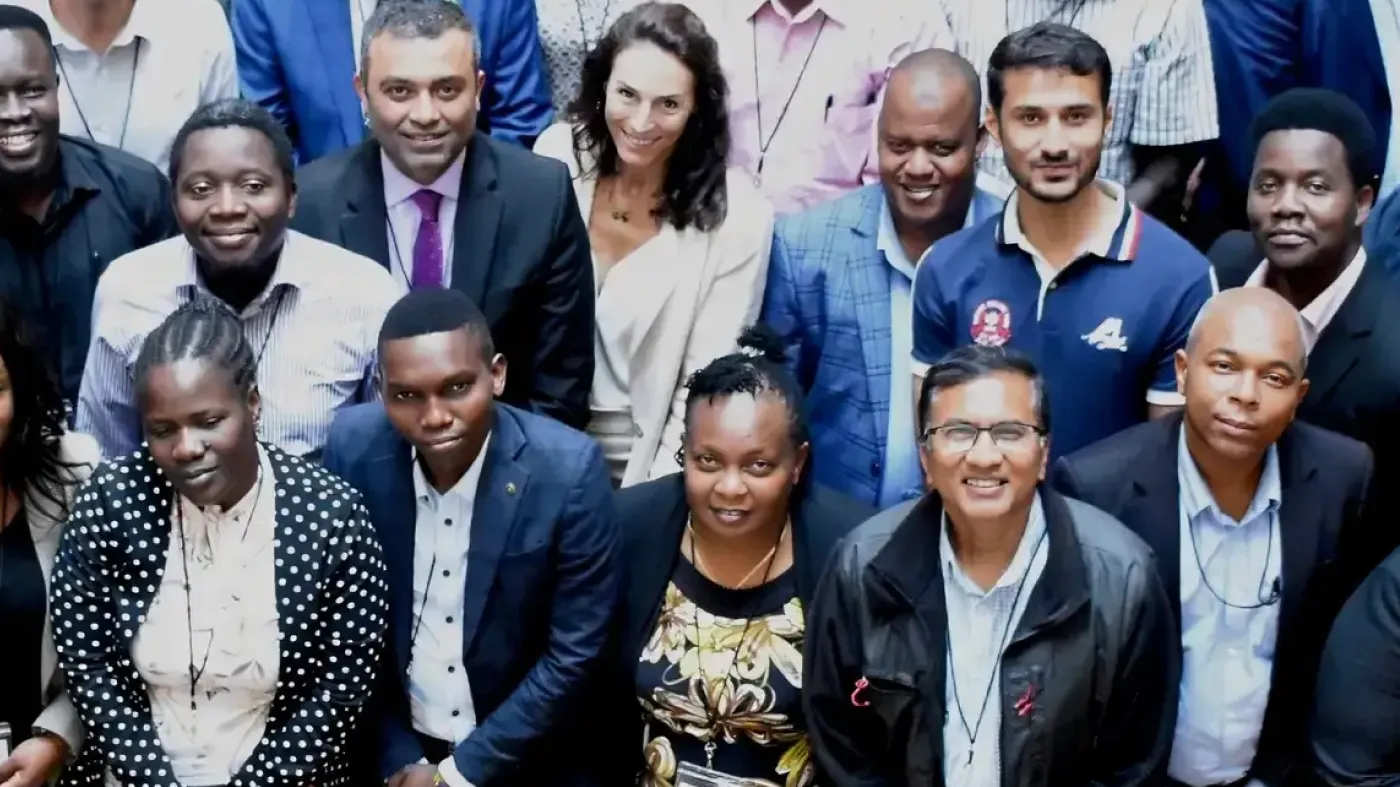Download All Country Data
From warehouse storekeepers to nurses, it takes a village to get lifesaving health supplies to patients and health care workers. But these supply chain systems, by which health supplies such as pharmaceuticals, personal protective equipment (PPE) and medical devices flow from the manufacturer to the recipient, cannot always adapt quickly to external shocks. When people lose access to the health products they need to live, or when health care workers fail to receive the tools they need to do their jobs, the consequences can be fatal.
The COVID-19 pandemic rattled supply chains across the world. It required new PPE that was in short supply. As a result, demand and prices for certain types of PPE such as gowns and N95 masks skyrocketed by more than 1,000 percent in the United States. As of April 2021, more than one year after the World Health Organization declared a pandemic, one third of countries were still experiencing supply chain disruptions.
When COVID-19 hit Nigeria, the country lacked sufficient PPE, diagnostic equipment and medical countermeasures, which are lifesaving medicine and supplies used to fight new infectious disease threats as they emerge. Officials sought a solution to the problem of maintaining a strong supply system for these commodities in the face of the greatest public health emergency of our lifetime.
The Nigeria Centre for Disease Control (NCDC), the country’s national public health institute, is tasked with preventing, detecting and responding to disease outbreaks and public health threats. Part of its work during the COVID-19 pandemic has been to manage supply chain processes for COVID-19 commodities. Resolve to Save Lives (Resolve), an initiative of Vital Strategies, has partnered with the NCDC since 2017, working together to strengthen Nigeria’s epidemic preparedness and response systems. As part of this partnership, Resolve collaborated with the NCDC to strengthen its health supply chains in the face of overwhelming need caused by the pandemic and the challenges it posed to the reliable flow of goods.
Engaging the participants to identify the gaps
Each participant in a supply chain system has an important job to fulfill. The NCDC team, with support from Resolve, held focus groups and interviews with system participants, including warehouse workers, storekeepers and emergency supply chain officers, to identify gaps. One key finding was that participants had low confidence in their ability to manage an emergency response of COVID-19’s magnitude. The NCDC developed a series of tools focused on learning and development for inventory management and the use of technology to manage and ensure commodities were properly stocked. Furthermore, Resolve offered one-on-one support, training and mentorship to 10 people. Through focus groups and discussions with NCDC warehouse staff and volunteers, NCDC officials revised standard operating procedures, job descriptions and job aids for warehouse staff and volunteers involved in supply chain processes.
Counting the inventory one-by-one
Effective supply chains also depend on strong information systems—without them, supplies can fall through the cracks. The NCDC and Resolve worked to strengthen information systems in Nigeria’s warehouses. The organizations helped create a Daily Inventory Tracker (DIT), a Microsoft Excel document that captures and reports all incoming donations, procurements and movements from multiple warehouses to central medical stores across Nigeria’s 36 states and Federal Capital Territory. Prior to this intervention, distribution in the supply chain was not centralized, which made planning across different states and warehouses nearly impossible in the face of a public health crisis, such as the COVID-19 pandemic. Using a centralized commodity database to track all the commodities saved time and human resources and made coordination much simpler.

Coordination of a delivery of supplies
“What we did when we came was harness the strength of the existing structure, analyze the structure with the NCDC supply chain management team and say: ‘OK guys, it would be easier if we do it this way,” said Okeoma Erojikwe, Technical Officer for Supply Chain Management at Resolve.
Using the DIT, stakeholders can create COVID-19 community dashboards, which make it easier to determine supply needs by clearly laying out product selection, stock status and gap analysis of commodities, in addition to an estimated quantity of each product needed in a particular location at a given time. A virtual store map was also created to help with identifying supplies.
The NCDC’s supply chain management team trained staff to develop and set up inventory cards for all line items in warehouses and take stock of all warehouse items using this new inventory process. All told, about 100 inventory cards were created for Infection Prevention and Control (IPC) supplies, and 600 commodities for diagnostic services were tracked with the DIT. Within weeks, every IPC commodity across various warehouses had an inventory card.
As a result of these information systems, it was easier to follow the emergency operation center’s (EOC’s) command on COVID-19 spread and scale up Nigeria’s health commodity supply chain from 37 state ministry of health stores to 74, along with 36 primary health care contact points and 40 federal health facilities.
Applying data to systems management
More broadly, the information systems have made stores of data available to aid in decision-making at various levels of Nigeria’s health system. Compiling this data was a valuable tool in helping the health supply chain run more smoothly and efficiently; it allowed officials to forecast and plan for potential shocks or disruptions much more accurately than before. Due to this improved efficiency, participants in the system were able to lower operational costs and minimize potential hazards such as commodity expiration and over- or understocking commodities at the point of care facilities.

A truck used to haul vital supplies
“It helps you have this visibility into what you have sent out, what you have in stock and what you’re expected to use in the next four to six months or thereabouts,” said Erojikwe. “The whole essence is so that there is no stockout and potential write off.”
These information systems further reduced the turnaround time for health supply requests and ensured proper stock rotation by, for example, bringing items with the earliest expiration dates to the front of the line. With the information systems in place, officials could make sure that health care facilities would have two weeks’ worth of supplies and that supplies would be shipped to each facility within 48 hours. By every 12thday, the systems would show officials that it was time to deploy the next line of supplies. This deployment improved monthly and bimonthly restocking of commodities. COVID-19 disease patterns were monitored and analyzed through the EOC command system of the NCDC, which would alert supply chain stakeholders to any potential roadblocks caused by the pandemic.
Several units of the NCDC collaborated on this multi-sectoral approach to COVID-19: health emergency preparedness and response, surveillance and epidemiology, laboratory services, prevention programs and knowledge management, administration and finance. This collaboration resulted in stronger supply chain response and improved deployment of COVID-19 IPC commodities and diagnostics. This improvement was felt nationally and across states. Together, the NCDC and Resolve worked to make Nigeria’s health supply chain adaptable and resilient enough to both handle the COVID-19 pandemic and weather any future shocks.
“It was a tough situation, but generally I’m proud of my team. And through the trainings from NCDC and Resolve, I learned more about inventory management and forecasting, which is key in ensuring proper flow of COVID-19 items in response to demand and support across the nation, also how to apply effective logistics models which helped me in my work managing the COVID-19 emergency supply chain in Nigeria,” said Onyebuchi Asogwa, a pharmacist.






